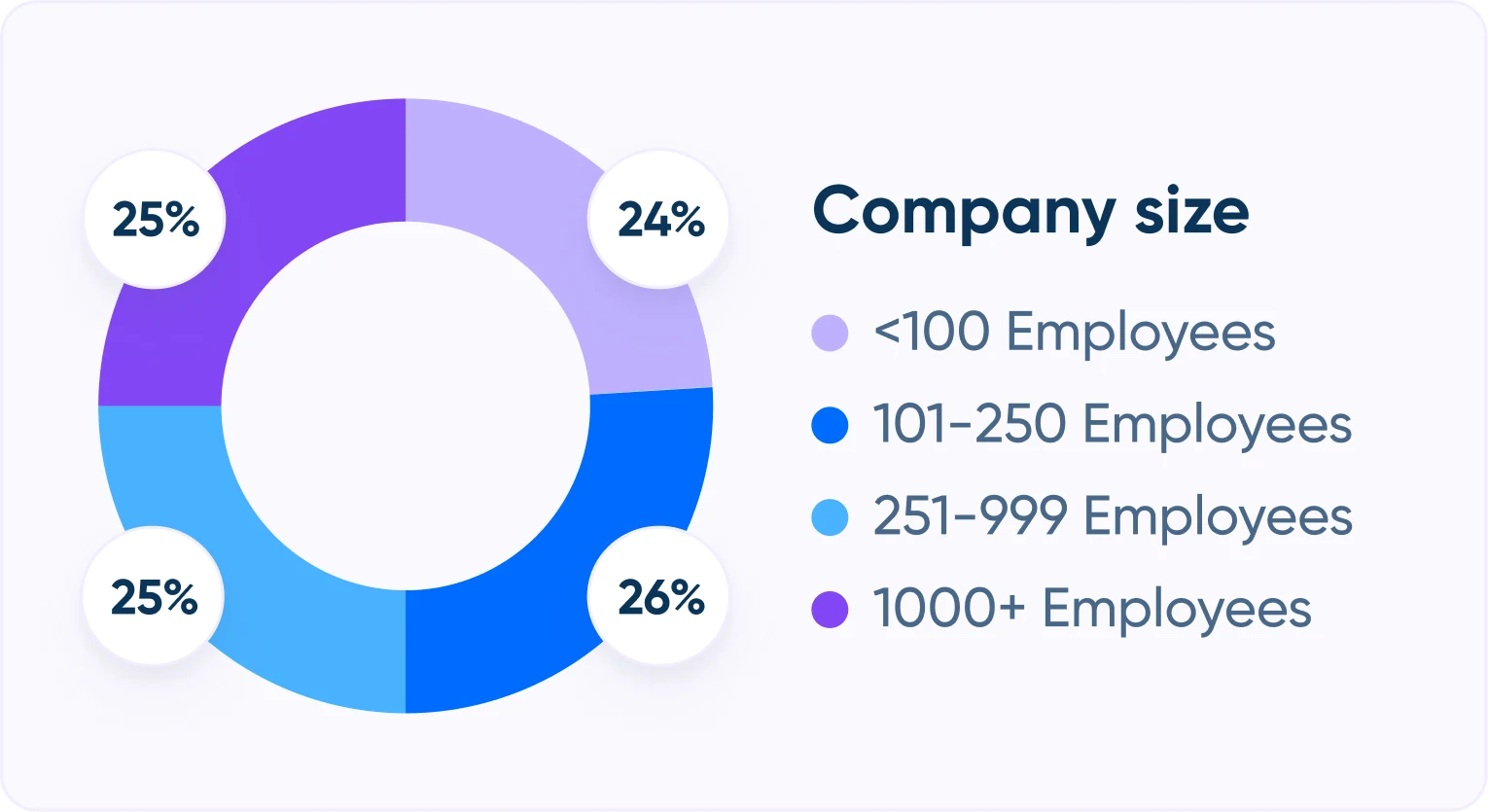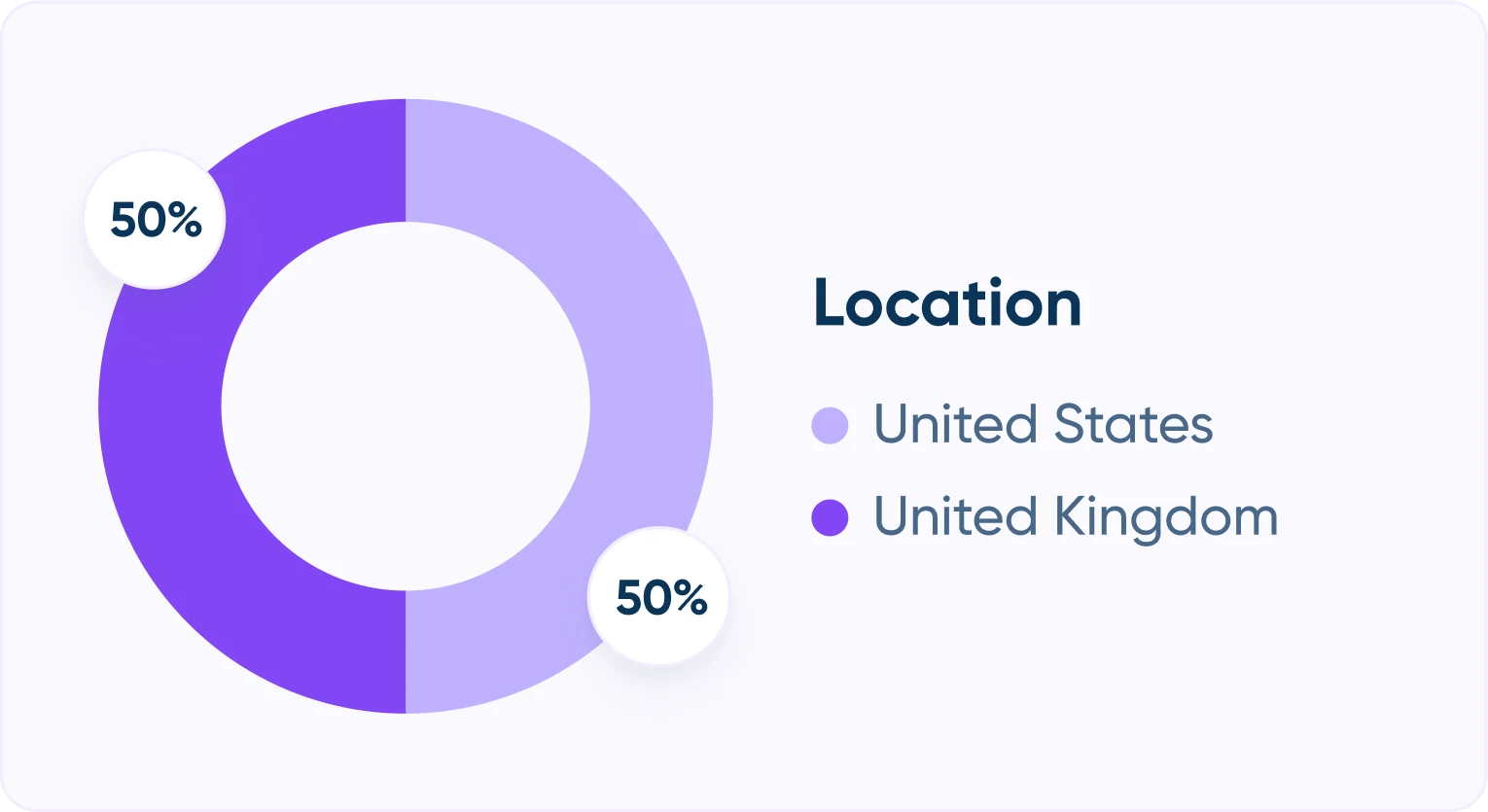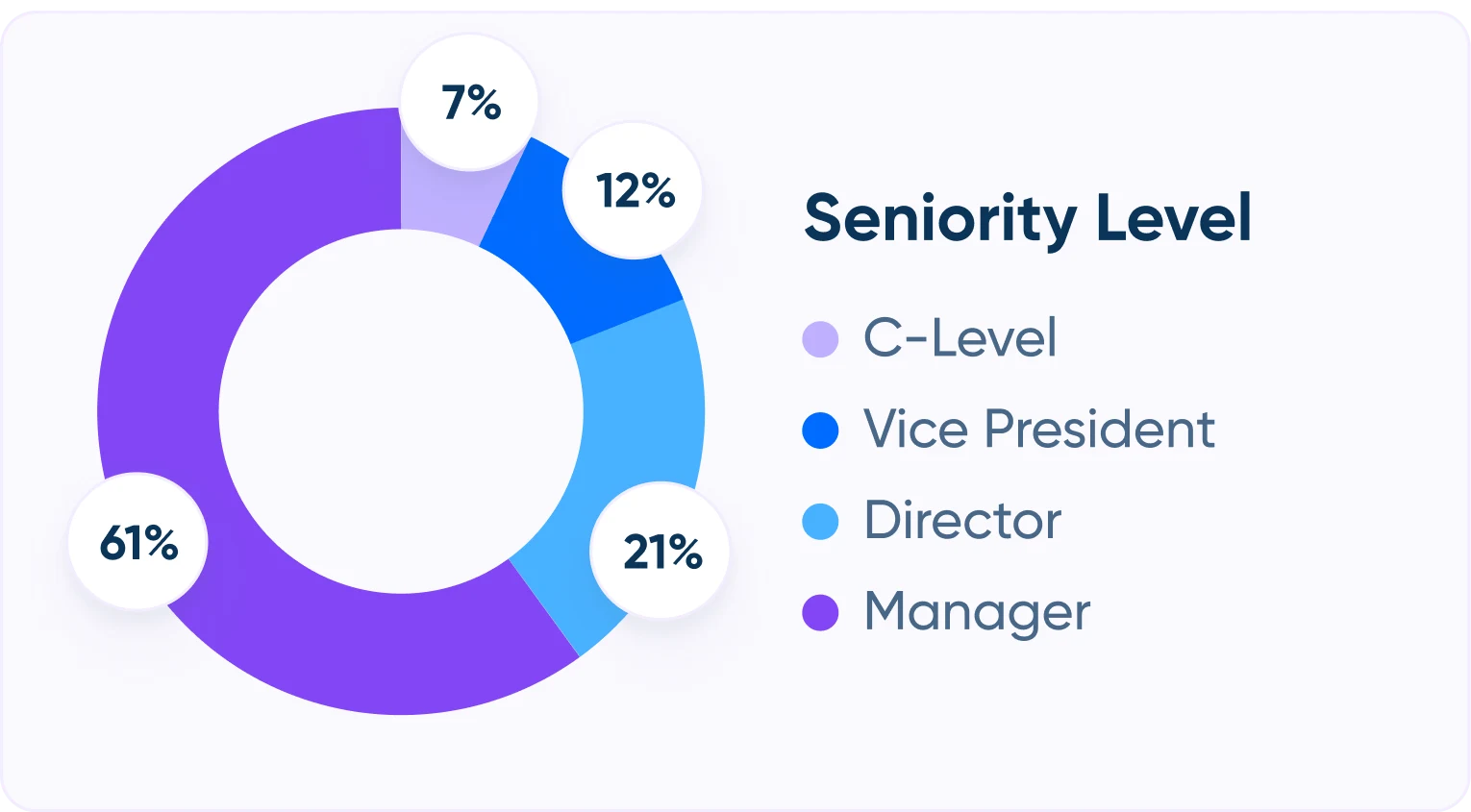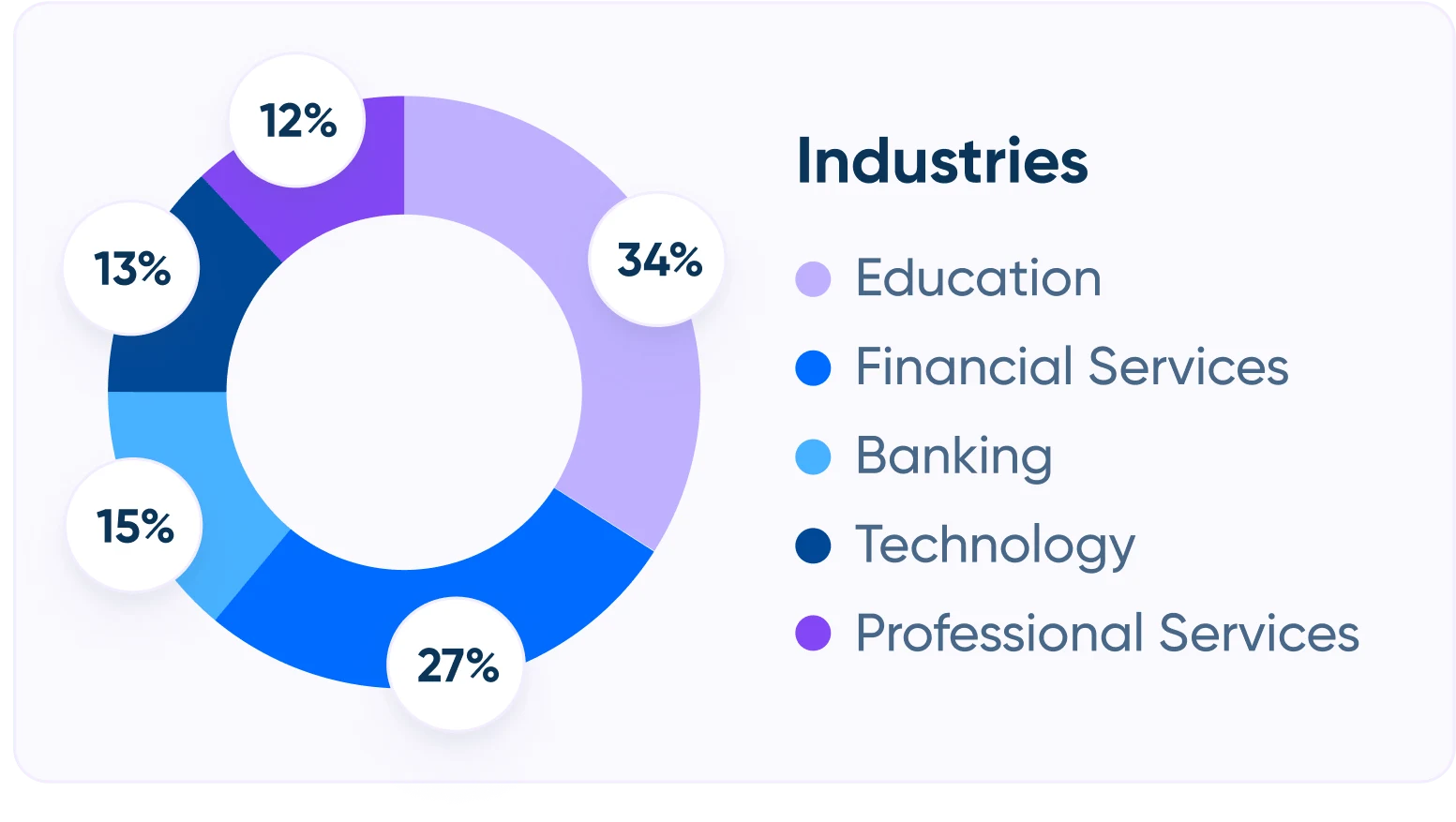💥 Our new & improved browser extension lets you manage your meetings, scheduling links, and contacts in a single click
The State of Scheduling
Workers are champing at the bit to use AI, yet the great majority haven’t touched it yet.
Table of contents
We’re overwhelmed. Constant interruptions, app juggling, hybrid work headaches, mundane meeting tasks … it’s all taking a toll.
Endless collaboration tools — and now AI — promise solutions to today’s productivity problems. And they are serious problems. In our State of Scheduling report, 89% of workers said they spend up to 4 hours per week just scheduling meetings.
Calendly’s report also proves AI intrigue is high. But workers haven’t jumped in yet.
Clearly it’s time to merge scheduling tech with AI to build something better than we have now. But it’s going to be an evolution, not a revolution.
Our report surveyed 1,200 professionals in the United States and United Kingdom about scheduling, meetings, and time management — and how AI will eventually affect them all. We’ve discovered successful individuals and companies actually do consider meetings mission critical (contrary to the hype that fewer meetings make you more productive).
What you’ll hear from the workers in the report:
Inefficient scheduling is the new productivity killer, especially in hybrid workplaces.
There’s universal curiosity about AI’s potential impact on time-savings, relationships, and business outcomes, yet the majority still haven’t tried it.
Most scheduling processes and meetings are inadequate. Good news: Our most successful respondents share their best time-saving habits and AI outlooks.
Workers feel optimistic, productive … and like scheduling is slowing them down
We’ve all thought it: This meeting could’ve been a Slack (or email or slide or Loom).
But meetings aren’t going anywhere. Those who self-identified as most successful also linked meetings as essential to their success.
87%
feel their company is meeting or exceeding targets
85%
feel their company is growing in revenue, hiring, and/or customer base
85%
feel they’re productive to very productive on a typical workday
And yet ...
Our report found people don’t resent all meetings. Some meetings are absolutely essential, like job candidate interviews, sales proposal discussions, and quarterly reviews with customers.
What people resent are unproductive meetings. They resent the busywork around the meeting lifecycle — finding times to meet, building agendas, taking notes, etc. They resent lost time; time they’d rather channel into something strategic and ambitious.
Despite optimistic self-reporting on company performance, outlook, and productivity, people are still spending way too much time on meeting scheduling, which becomes more complex as companies grow.
52% most frequently engage in in-person meetings, followed by virtual meetings and conference calls (47%)
The return to work and hybrid work trends make scheduling even more complicated because they add so many extra layers to scheduling: Is this meeting virtual or in person? If it's in person, but on a day I'm not scheduled to be in the office, can I attend virtually or watch the recording later?
Action Items
Before scheduling a meeting, ask yourself: “What company goal does this help achieve?” If you can’t figure out how this meeting will help you hit your goals, the meeting might not be necessary.
If your team uses a booking page to let candidates, clients, or prospects self-schedule, use automated questions to gather important info before the meeting. Ask about accessibility needs, additional contact details, or meeting discussion items.
Prepare your team for the AI evolution so they have time to adjust to the idea that soon we’ll all be adding AI touchpoints throughout the meeting lifecycle — before, during, and after every meeting. You want your team to be mentally ready to pivot and hit the ground running.
Majority are AI curious, but cautious
Leaders are eager for solutions to help ease the scheduling burden, and they’re optimistic AI can save them time … but they’re still holding back.
64% of workers at large companies have never used AI, yet 94% are curious to try AI-powered tools for productivity
To break it down even further, despite high interest among those surveyed, 76% in customer success, 57% in sales and marketing, and 51% in HR haven’t used AI to be more productive. There are well documented reasons companies are hesitating, including misinformation, security, reskilling, and just a lot of questions around building AI strategy*.
But the enthusiasm is undeniable. On average, respondents said the top two capabilities they’re most excited for with AI are automated scheduling (49%) and meeting notes capture (56%). These AI functions are also the ones people trust the most.
Regionally, both U.S. and U.K. workers responded with similar interests and trust in AI capabilities, with some nuanced differences. Specifically, in the U.K., Automated Scheduling was the top trusted AI capability (55%).
Top trusted AI capabilities by roles
Nearly 1/3 of sales and marketing professionals are most excited about AI enabling enhanced decision-making by providing data-driven insights.
AI isn’t here to replace humans. Of those surveyed, 44% believe AI will complement (not replace) personal connections. On the flip side, 36% say AI will decrease face-to-face interactions and 24% say AI introduces collaboration challenges.
AI does require a major shift in mindset. We have a huge opportunity to improve workflows and the meeting cycle. That only works if we put people first in our AI journey, re-examining our customer experience and our employee experience.
“AI capabilities have rapidly accelerated in the last 12 months, and we’re already seeing a major evolution in the ways we can work together to fix what we don’t love about meetings. Because we know that when complicated technologies and burdensome administrative tasks get out of the way, meetings have a unique ability to drive authentic connections and bring teams together to accomplish more. We’re tapping into this AI optimism at Calendly and leaning into what people need to make scheduling and meetings the most productive and focused they can be.”
Stephen Hsu
Chief Product Officer at Calendly
Action Items
Choose AI and automation tools that are agnostic and integrate with your existing tech stack, so you can get more done without reinventing the wheel. In our survey, the three most popular AI‒powered productivity solutions right now are ChatGPT, Google Assistant, and Microsoft Azure.
Ask for feedback: Creating a culture of great meetings is an iterative process. Regularly ask your team what they think about meeting cadences, formats, and content, then make changes or try out new things accordingly.
Block time on your calendar for meeting-free, focused deep work. The majority of people on successful teams regularly create boundaries on their calendar to safeguard their time.
There’s a strong appetite for AI scheduling tools, mainly to make time for relationship-building
Those surveyed say they don’t have enough uninterrupted focus time during the workday.
Successful teams protect more blocks of time in their schedules so they have enough time to both build relationships and manage transactional tasks. But 56% of our respondents still want more time for relationship building.
More people want AI to help them automate scheduling than to manage projects or create content
Respondents are confident AI won’t take their jobs. But they believe AI can remove emotional labor for dreaded and mundane tasks. They’re hungry for AI’s potential to give them time back.
The top four reasons people want this time? To build better customer and prospect relationships.
It’s time to turn over the scheduling minutiae to AI so teams have more time to brainstorm, be creative, and think big picture. Most managers would agree: They’d much rather see their workers eschew admin tasks for building better relationships with customers, prospects, and candidates.
Action Items
To get in the right headspace, examine all the ways AI already makes your day-to-day life easier (like using face recognition to open your phone, or Netflix’s “other movies you may enjoy” recommendations).
Then, crowdsource ideas across your company: Brainstorm all the ways AI could solve your customers’ pain points AND your internal, operational pain points. Your competition is already doing this. Even if you can’t implement all your ideas immediately, you can have a strategy ready for when you get the green light.
Does AI feel daunting? Start small. Choose a use case that is low stakes and measurable, like email subject line A/B tests or sales outreach tests. Trying out new things is fun, but still set clear goals with a business benefit.
While in tech media the AI Gold Rush feels in full force and pressure mounts to join in, the truth is most AI progress within apps will be incremental. And most customers won’t be comfortable being in the vanguard.
Until you and your customers are ready to leap into AI, you can still improve productivity. Just follow the lead of our highest-performing respondents, who shared their best time-saving habits.
Revealing habits of successful teams
Successful teams…
Spend more time in weekly meetings that contribute to company goals
61% spend 3–5+ hours in goal-focused meetings per week, compared to just 41% of those on less successful teams.
Establish more guardrails around their calendars
61% create boundaries or dedicated time blocks for focused work, compared to 39% of those on less successful teams.
Make more time in the day to build relationships
56% have enough time in their workday to build relationships with customers, prospects, team members, and others, compared to just 43% of those on less successful teams.
Are more curious about trying AI-powered tools to enhance productivity
52% are curious or extremely curious about trying new AI powered tools, compared to only 28% of those on less successful teams.
The future of AI-powered scheduling
Finding purpose in work can mean a lot of different things — but we all unanimously crave more time to focus on meaningful activities and reduce mundane tasks.
Using AI in ways that increase productivity, reduce toggle tax between apps, cut down on repetitive processes or tasks — that frees up additional time in our workdays to connect with others and dive into the more fulfilling and thoughtful parts of our jobs. And while many enterprise workers have yet to benefit from daily use of AI, a majority see its promise and report feeling curious about the tools.
AI will ease scheduling and meeting touchpoints so teams have the most effective, strategic meetings possible. And it will help workers have higher quality, more authentic interactions across the meeting lifecycle.
In the meeting space, it’s time to build something better than what we have now.
Then, we’ll have time to do the strategic thinking that ignites business breakthroughs.
Join the waitlist to get exclusive sneak peeks and early access to Calendly's AI releases
Methodology and Definitions
This report is Calendly’s inaugural look at the state of scheduling, with a special focus around productivity and AI for 2023. As we’re learning, when it comes to being productive at work, AI isn’t a revolution: It’s an evolution. Through the years this report will track scheduling and meeting productivity as apps like Calendly use AI to help you better schedule, prepare, engage, and follow up.
Calendly’s State of Scheduling Report was conducted by an independent research firm, Hello Messaging, who fielded a survey from Aug. 25 to Sept. 13, 2023. The firm collected responses from 1,241 workers across the United States and United Kingdom within a variety of industries, roles, and sized companies. Participants were asked to self-identify job roles, industries, company growth, and company success.
Successful teams: Respondents who identified their companies as performing at or above targets and as in a growth stage that is “steady” or “strong”.
Company sizes: small (less than 100 employees) medium (101-250 employees) large 251-999 employees, enterprise (1,000+ employees)
*External sources include Forbes, Entrepreneur, Harvard Business Review, and Inc.com
Demographics: The people behind the report
Asked about their current job role, respondents fell fairly evenly into three categories: customer success, sales/marketing, and HR/recruiting.
In this report Calendly deliberately sought an equal number of respondents who worked for small, medium, large, and enterprise companies.
In this report Calendly deliberately split respondents 50/50 geographically, from the United States and the United Kingdom. Calendly has users in 230+ countries, including the U.S. and U.K. We dove deeper into U.S. and U.K. habits and sentiment in particular for this report.
Respondents self-identified their current job level, with the grand majority (61%) describing themselves as managers. The survey still drew a good sample of more senior roles, from director titles to C-suite level executives.
Because Calendly serves 200 million customers in a wide variety of industries, the report represents customers in some of our largest demographic segments, including financial services, tech, education, and professional services, such as consultants, law and accounting firms, and staffing agencies.
For media questions or inquiries, please contact media@calendly.com.
Related Articles
Don't leave your prospects, customers, and candidates waiting
Calendly eliminates the scheduling back and forth and helps you hit goals faster. Get started in seconds.
Calendly eliminates the scheduling back and forth and helps you hit goals faster. Get started in seconds.
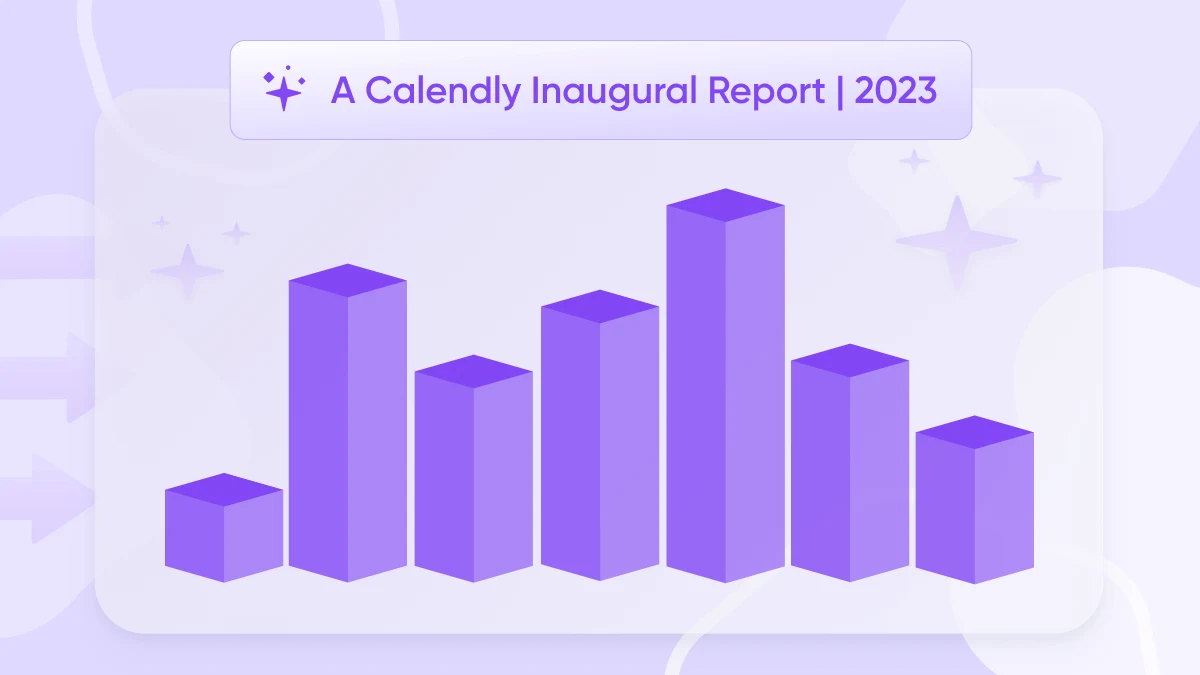
![[State of Scheduling Report 2023] - 89 of workers spend up to 4 hours scheduling meetings](https://images.ctfassets.net/k0lk9kiuza3o/15eI5oQqGZiUOa1ol05Xyc/37b9c77910d09ff44c832ecf18a9abb3/89-percent-stat-state-of-scheduling.png?q=85&fm=webp)
![[State of Scheduling Report 2023] - In person vs virtual meetings](https://images.ctfassets.net/k0lk9kiuza3o/6xK2jDlyELyBJpWpAoLHbr/c85b5e467ddb0d257e820fd9df914221/in-person-vs-virtual-meetings-state-of-scheduling.png?q=85&fm=webp)
![[State of Scheduling 2023 Reprt] 25 of people](https://images.ctfassets.net/k0lk9kiuza3o/XaaIdkk1OmFjYJlxgnxWH/f6d15c0937e4024f72c566f53c5b987f/25-percent-stat-state-of-scheduling.png?q=85&fm=webp)
![[State of Scheduling 2023 Report] 46 of people](https://images.ctfassets.net/k0lk9kiuza3o/5NmEeD4iYNUzm3ILlyELDH/05f476540dd688297d0cd56d614e167d/46-percent-stat-state-of-scheduling.png?q=85&fm=webp)
![[State of Scheduling 2023 Report] 21 of people](https://images.ctfassets.net/k0lk9kiuza3o/3fqWJ1GttAnjDkVsWxlQNy/28cda2eefa55052f26825dca60481a6b/21-percent-stat-state-of-scheduling.png?q=85&fm=webp)
![[State of Scheduling 2023] Top trusted capabilities by role](https://images.ctfassets.net/k0lk9kiuza3o/5oFwkNDFapfk7Si40zKSNm/ee871d8014c9404fa53ddead97029379/top-trusted-ai-capabilities-state-of-scheduling.png?q=85&fm=webp)
![[State of Scheduling 2023] How closely do you guard your schedule](https://images.ctfassets.net/k0lk9kiuza3o/59hOLefdy77SxjOS5I80Mw/114df97857e6fb83e90368d3a4899453/guard-you-schedule-state-of-scheduling.png?q=85&fm=webp)
![[State of Scheduling Report 2023] Top benefits of AI most excited](https://images.ctfassets.net/k0lk9kiuza3o/7cNV5fDWbxQ6sdQeK6jwBD/aa7c8d2416b2ac5cbd85564e9edf820d/top-benefits-of-ai-state-of-scheduling.png?q=85&fm=webp)
![[State of Scheduling 2023] How closely do you guard your schedule](https://images.ctfassets.net/k0lk9kiuza3o/7zrxTEdxl5B81IUwg2G4I9/7ee03a52357a2cb3825ae2369d7a9e41/spend-free-time-state-of-scheduling.png?q=85&fm=webp)
![[State of Scheduling 2023] 61 of successful teams](https://images.ctfassets.net/k0lk9kiuza3o/2qrFA4wqrSgQMQy5F7Rar6/b432152a64e206a95783fe23ed1d4df4/successful-teams-meeting-frequency-state-of-scheduling.png?q=85&fm=webp)

